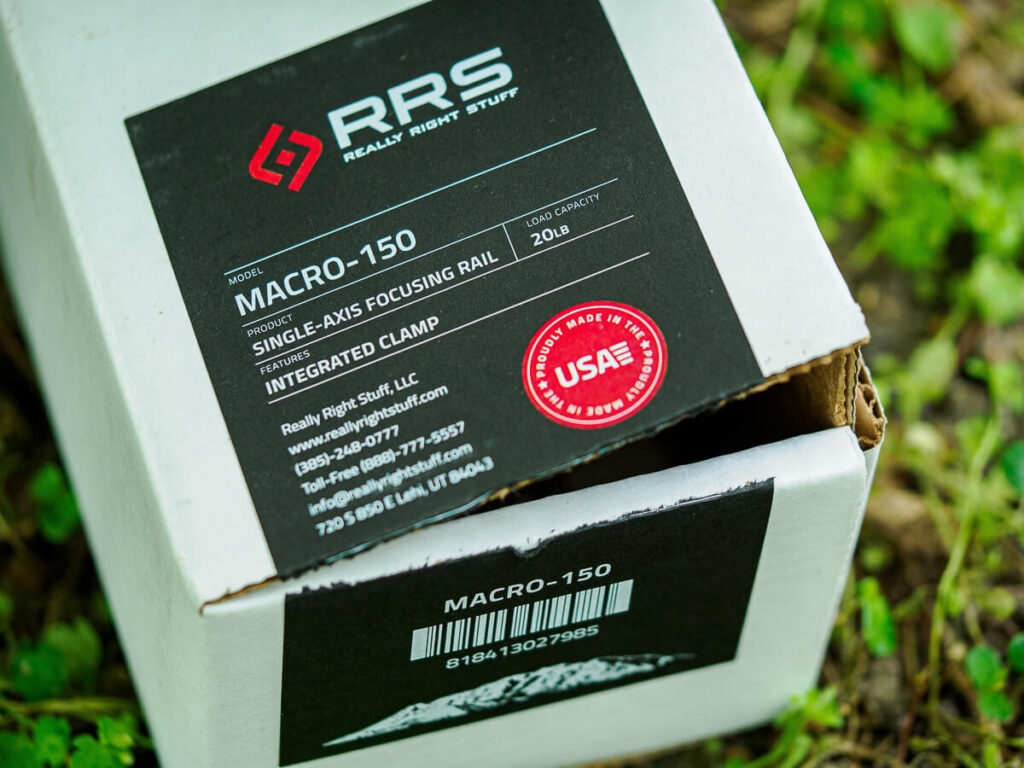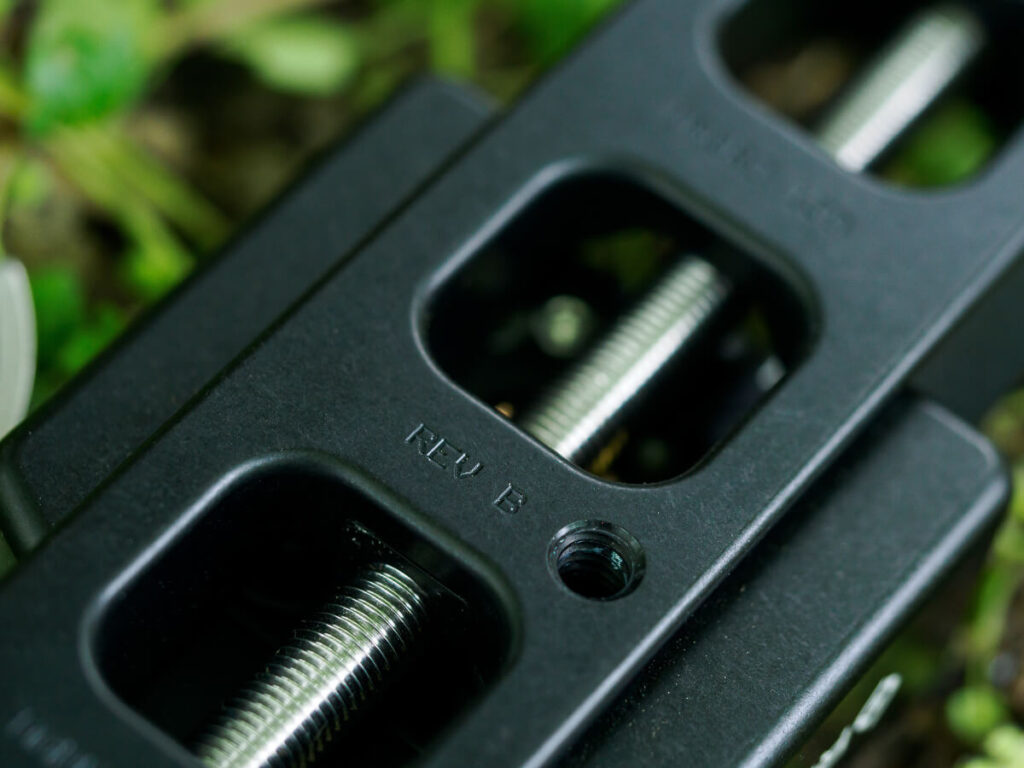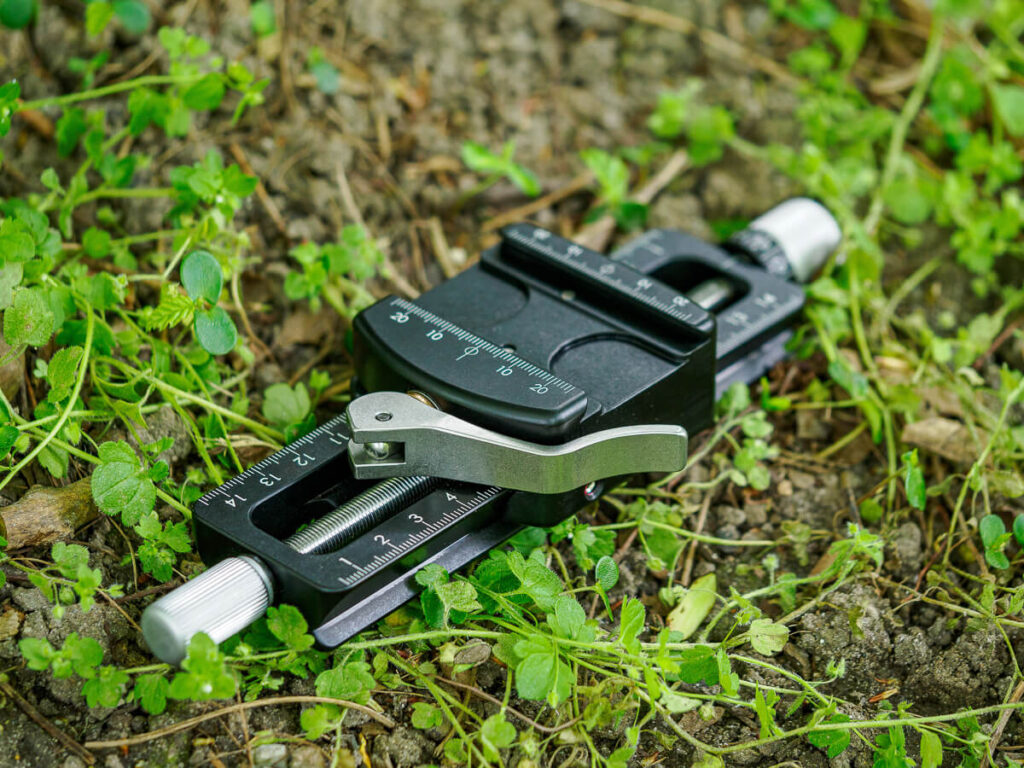06 Nov Review: RRS Macro 150 Focusing Rail Really Right Stuff

Focusing rails are a classic tool in macro photography and extreme macro photography in particular.
When it comes to manual focus bracketing and focus stacking of static objects, a smooth running focusing rail is extremely valuable and can make or break a great stack.
The Macro 150 focusing rail from Really Right Stuff (RRS) is on the higher end of the price range and allows precise adjusting in challenging focus stacking scenarios.
Its slider unit sits on a 150mm dovetail (hence the product name) and offers 103mm of stage travel distance – more than enough for the deepest of focus stacks.
What sets it apart from other focusing rails, is its stage tension that is factory set during assembly – with the tight-tolerance CNC-components preventing drift and backlash.
At least that is what the RRS website claims, so let´s take a look if the RRS Macro 150 can hold up to the promises.
RRS Macro 150 price: 395 USD (500-600 Euro from Germany)
Boxing and package


The rail comes in their stylish signature cardboard box, with black ink prints and a label sticker.
A simple and practical packaging, that does not feature any unnecessary plastic components.
I like that.
At such a high price point you could argue, that the packing does not reflect the investment, but I prefer if the money is spent on the actual product and not wasted for something you throw away anyways in most cases.
Design and Build quality

RRS – Really Right Stuff is a company known for perfectly manufactured products, made in the USA.
They advertise with “Unmatched Quality. Innovation.” – so this is what their products, that are anything but cheap, too, must live up to.
All the matte black 6061 aluminum and stainless steel parts are precision machined.
The RRS Macro 150 has a quick release with an oversized handle, which the company uses on most of its products and which I actually like a lot.


While other recent models of focusing rail brands have added a 90-degree-step turning angle option to their bases, the quick release of the RRS Macro 150 allows to change the angle of the camera quickly with a compatible base plate, at least.
This comes into play, when you are using the rail for a horizontal panorama for example.
On the underside, the RRS Macro 150 has a full-length ARCA (dovetail) rail profile.

The focus knob


One of the most important features of a focusing rail is the focus shifting knob and how smooth you can control the camera movement with it.
It is essential, that there is the right grip applied and that the revolution is perfect, both in distance travel as well as for the subjective and practical feeling while using it.
Focusing rails have two options for the placement of the focus knob: on the side or at the end (or front) of the rail.
The advantage of having the knob on the side is, that you have an instant idea in which direction you are moving the camera.
Placing the knob on the back can somehow break this somewhat natural pattern.
In case of the RRS Macro 150, to move the camera away from you, the knob has to be turned to the left (if you turn the knob that has the zeroing-dial).
It is not that much of a problem, but it might break memorized patterns.
On the other hand, having the knob so close to you, does not require you to reach to the rail´s side anymore, which can also be a handling advantage (in confined spaces in particular).
Contrary to my expectations, the knobs on the Macro 150 felt rather stuck – to convert the turning into movement along the axis it felt like you had to overturn an initial resistance.
If you turn it, there is a bit of slack before you feel it grips the gear and actually starts rotating it, moving the camera.
This results in a small, initial “jump” – which I did not like as it feels makes controlling the rail troublesome.
Using the RRS Macro 150
The lead screw of the RRS Macro 150 is adjusted to give 1mm of travel (pitch) for every revolution of the knob.
On the zeroing dial, Laser engraved markings for every 0,1mm step help keeping track over the tiniest steps and lets you reset to the zero position quickly before you start another run.
When moving the slider with the knob, the zeroing-dial turns with it, but to reset it to zero, you can turn the zeroing-dial seperately.
This is a really great and useful feature.
Backlash and drift are essentially eliminated due to tight-tolerance CNC-machined components.
Unlike other macro rails, there is no need to adjust the stage tension, as it is individually set during assembly – at least that is what RRS claim in their product description.
The rail´s maximum Load capacity is up to 9kg (20lbs).
So, for the rest of the features:
The base is a 150mm 1.5″ dovetail for mounting, which is a must-have for maximum flexibility, in my opinion.
The same goes for the 1/4″-20 socket for direct mounting.
For collared macro lenses, there is a lens mount available to make these compatible with the focusing rail.
It basically adds height, so that the camera can smoothly stay above the rail for the focusing.
It also makes the rail a 4-way rail.
You can find the B2-LMT Lens Collar Mount for the RRS 150 macro here.


RRS Macro 150 Specifications:
Length: 205mm / 8.09″
Height: 35mm / 1.38″
Width: 78mm / 3.05″
Weight: 390g / 13.8oz
Material: 6061 aluminum and stainless steel parts
The RRS Macro 150 comes with 2 additional Safety Stop Screws and a 2.5mm Hex Key.
Find all details on the RRS Macro 150 on the reallyrightstuff website, here.
Conclusion
Build quality and material of the RRS Macro 150 look and feel great.
The Focusing rail is well-designed and the handling is easy.
Given the price, I must say that the aforementioned adjustment-knobs felt a bit too stuck.
I am not sure if that was maybe an issue connected to my specific rail, or a general one for the series.
If you have the budget or if you are a loyal supporter of RRS than the Macro 150 is an absolute quality focusing rail.
With less budget though, I woud say that you can get an equally good focusing rail from another brand for half the RRS price.
Sign up for the newsletter mailing list & free ebook

Did you enjoy these tips and want to learn more or improve your macro photography skills?
Stay up to date with new blog posts, reviews and tutorial- and ebook-releases.
Sign up below to get notified when the free edition of my ebook
‘How to master spider & insect macro photography’ is ready for download.



No Comments